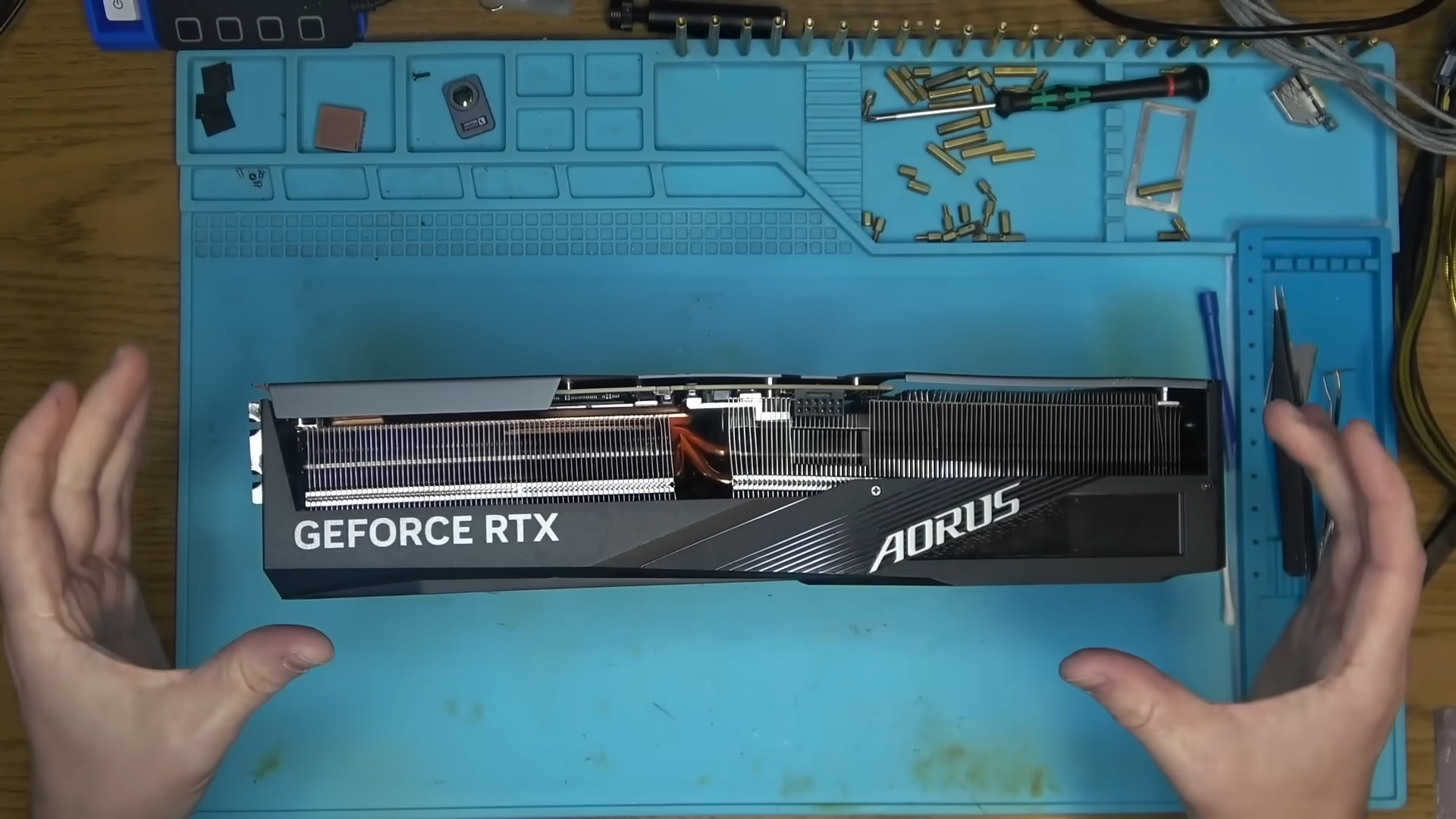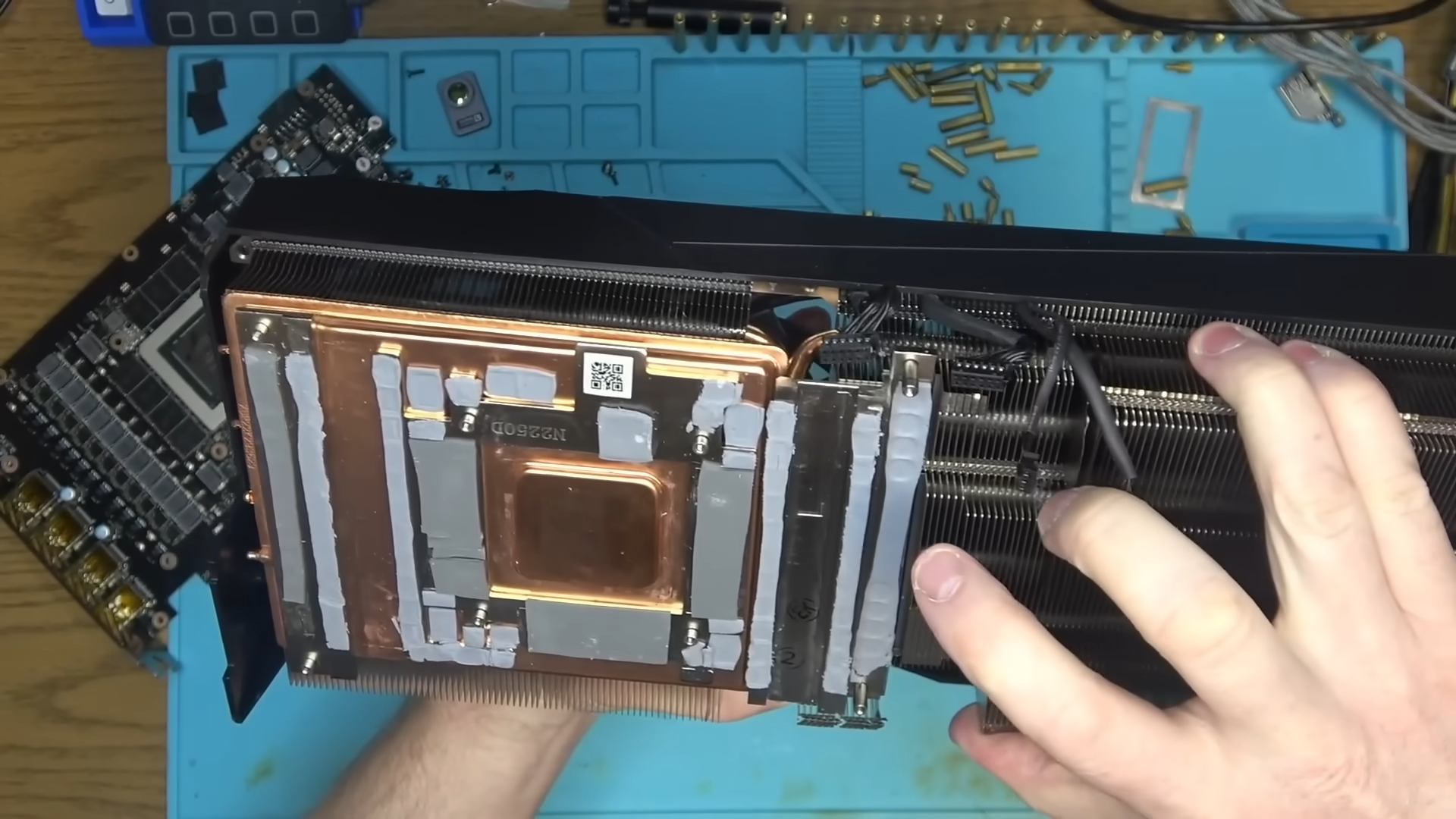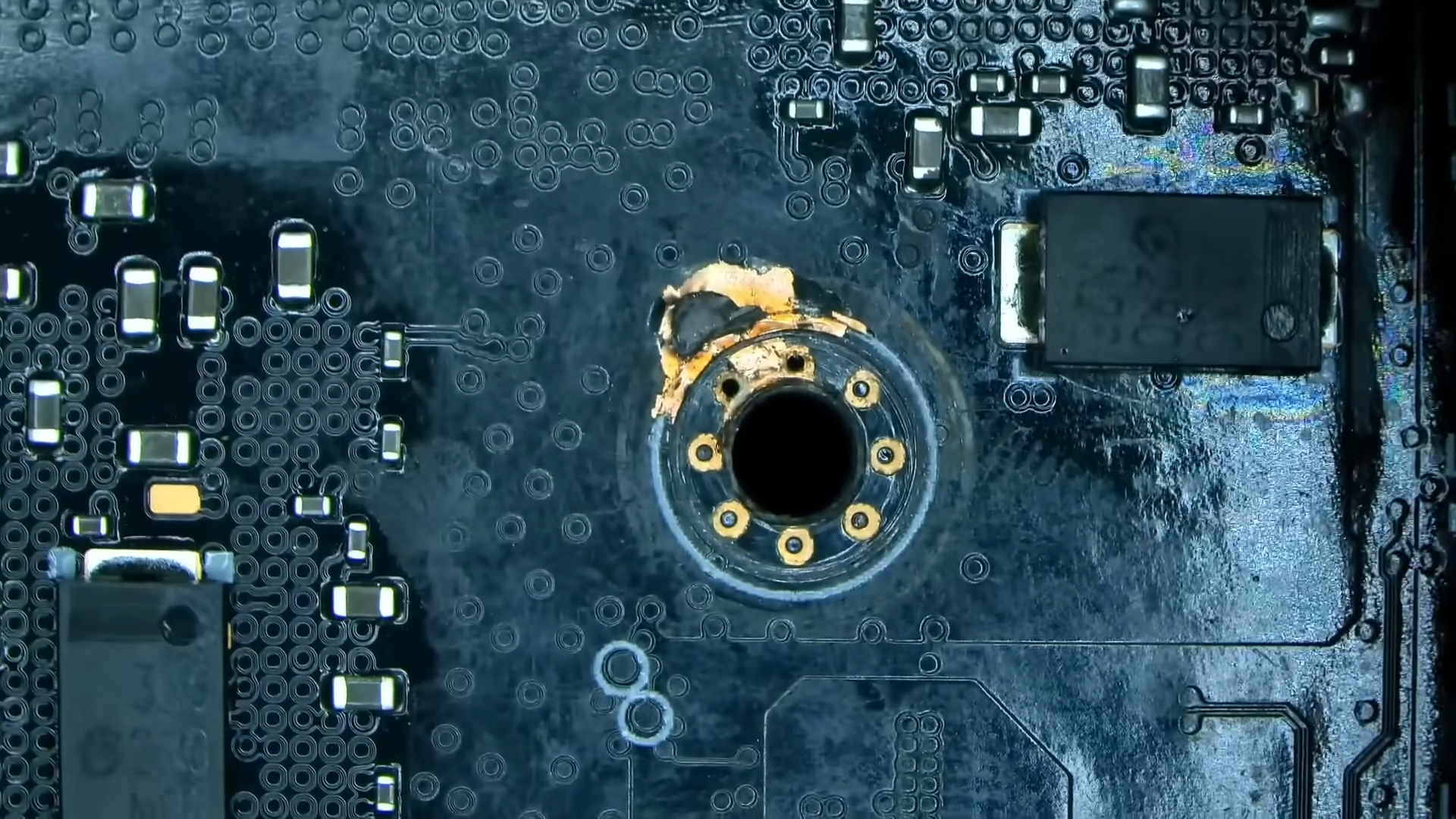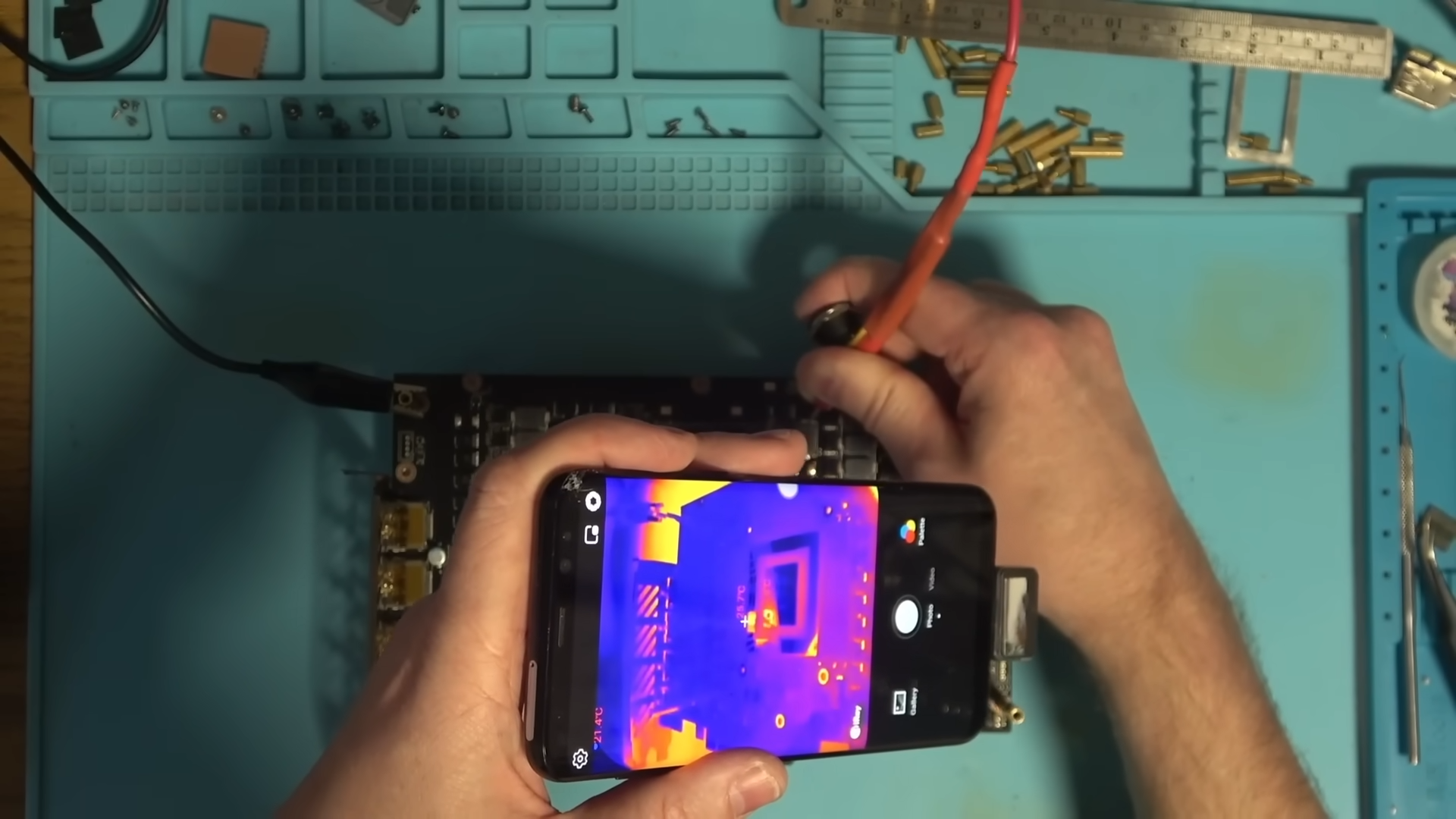GPU surgeon attempts to rescue fatally-bent RTX 4090 that came in for a melted power connector fix — autopsy reveals shorted MOSFET that killed the GPU core

Here's a bent-out-of-shape GPU repair that quickly turned from a curiosity into a horror story: A dead Aorus-branded Nvidia RTX 4090 card landed on the desk of Northwest Repair, originally reported to have a melted connector and "some knocked off components," but one by one, slowly, the tech finds so much wrong with this card that it's deemed irreparable by the end. That's rare for a GPU in those skillful hands. Let's dive into the rocky journey of attempting to fix a Scoliosis-ridden graphics card that's literally bent out of shape.
The bad signs began immediately: not only was the card obviously and unnaturally curved, but the backplate was screwed on with aftermarket plastic screws and looked severely worn, as if someone had thrown it around.
Once disassembled, the PCB itself was basically straight, but the cooler was so twisted that our host, Tony, just gave up trying to bend it back into shape. The heatpipes were fine, but the fin stack was separating from the vapor chamber, and the thermal pads weren’t even making contact with the VRAM and most of the MOSFETs.

“Screw this,” exclaimed the seasoned GPU tech, as he moved on to testing the GPU itself, pulling out the multimeter. There was a dead short on the 12V rail, 1.8V rail, and the memory, but the 5V and PEX were seemingly okay. After injecting current into the 12V rail, he formed the initial hypothesis. Under a thermal camera, he saw heat building up around the VRAM area, indicating that 12V was shorted to the memory and likely propagated further, frying other components. Checking the core’s resistance, however, confirmed that it wasn't shorted, so there was hope.
When put underneath a microscope, he discovered the card had previously been RMA’d, as it was in poor condition with a bunch of missing components, but nothing too egregious jumped out right away — except for grinding marks near a screw post, hinting that a Dremel was used there for some reason.

Next, a suspect VRAM module was removed, but the short still persisted, confirming the hypothesis that 12V reached the entire memory rail, likely taking out all the VRAM chips in the process. Tony grounded the memory rail to stabilize it before pushing a higher current to see what else was causing issues. Pushing 5 amps made the SIC653A power stage glow, indicating it failed and allowed the 12V to reach the memory. Removing the MOSFET made the short go away, and after replacing it with a new one from a donor board, he tested again.
The short on all the rails was gone, except for the memory. Tony once again injected a few amps into the VRAM, and sure enough, the core started getting hot, confirming a dreadful conclusion. He just performed an autopsy, not a repair, as the 12V had travelled through the memory chips and eventually reached the core, frying it in the process.
Get Tom's Hardware's best news and in-depth reviews, straight to your inbox.
You might be wondering why it looked “okay” before, and that’s because the resistance test only shows obvious shorts; it’s only when actual current is injected that the electrically wounded GPU core collapsed and confirmed it was dead.

Tony admits he didn’t need to do all that, and that reviving this card based on its condition would be nothing short of a miracle. Discovering the dead core wouldn’t have been possible without first replacing the MOSFET, which removed the short on the 12V rail and confirmed that the rest of the card was not salvageable. It’s a routine part of electronics repair and par for the course when attempting to fix sensitive hardware like graphics cards.

Follow Tom's Hardware on Google News, or add us as a preferred source, to get our latest news, analysis, & reviews in your feeds.

Hassam Nasir is a die-hard hardware enthusiast with years of experience as a tech editor and writer, focusing on detailed CPU comparisons and general hardware news. When he’s not working, you’ll find him bending tubes for his ever-evolving custom water-loop gaming rig or benchmarking the latest CPUs and GPUs just for fun.
-
artk2219 Reply
I really wonder how this card got to be this beat up. Bad packaging in shipping? Rage? What a mess.Admin said:It's not often we see a graphics card that is almost completely fried across the board. That's what happened with this poor RTX 4090 whose 12V rail leaked into the memory, frying the VRAM and travelling to the core in the process, killing the GPU for good. Not only that, but the card was also comically bent to the point where suggesting someone might've used it as a self-defense weapon wouldn't be far-fetched.
GPU surgeon attempts to rescue fatally-bent RTX 4090 that came in for a melted power connector fix — autopsy reveals shorted MOSFET that killed the... : Read more
